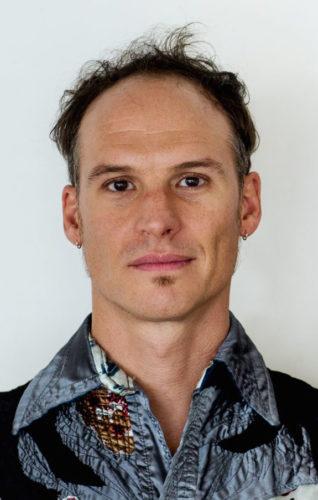Thursday, March 3rd, 2016
written by Tim Hansen
When JFund awardee James Everest was three years old, he composed a thunderstorm on his parents’ upright piano. He recalls the “crashing thunder on clusters of low keys, and sprinkling rain drops on individual high notes—with an arc of the storm building and dissipating over time.” And sure, while the actual notes he played may have changed each time he conjured his thunderstorm, the structured improvisation upon which the piece was based never varied. Nor did it lose its appeal: Everest remembers the piece so clearly in part because it became a creative staple of his whole childhood and beyond.

“I remember going back to the piano and playing this song throughout growing up, and even into college,” he recalls, although it wasn’t a piece for performing to an audience. Instead, Everest used his thunderstorm in the same way that a painter might prime a canvas and mix his paints, a way to remind himself what kind of a composer he was. “It was almost always just for myself, but always with a sense of using the piano keys as a painter would use a brush to paint a picture, with careful attention to each gesture, in real time.”
Everest discovered his muse from a very young age, and she doesn’t show any signs of letting him down any time soon. Today, Everest still uses this cyclical process of improvisation, reflection and development, only now his palette has exploded from an upright piano to…well, pretty much anything and everything. If it’s creative, expressive, natural, community-oriented or even just plain unknown, Everest wants in.
“I think I’ve always had a natural curiosity about the world,” says Everest, “and about things I don’t know much about, and this has led me to be generally interested in new things, new directions, new challenges. I’ve also always been interested and inspired by collaborations—working across styles and disciplines to create new hybrid forms and experiences, often outside of my ‘comfort zone.’ This has been a driving force in my strong belief in community building with artists, and my many curated events and series. In the U.S., our largely market-based mentality often imposes a competitive model on artists, rather than a collective model, which is the direction I have worked towards.”
Everest’s strong collaborative ethic means he is genuinely at the hub of the alternative art scene in the Twin Cities, and is a genuine “all-rounder” performing artist. He is a founding member of a bunch of local bands, has collaborated with musical artists from as far away as London and Moscow, curated the Making Music conversation series at The Whole Music Club at U of MN & Walker Art Center, directs the roving iNMiGRATiON installation performance series, and freely works with video artists, dancers, choreographers, storytellers, conservationists, anyone who is willing to share their knowledge and experience with him in the creation of unique work.
One particularly fertile collaboration was with Catalyst, a performance project company directed by choreographer Emily Johnson. Everest was a core collaborator with Johnson for several years, one recent and very successful project being the SHORE project.
“Emily and I created a whole trilogy of works that related to her Yup’ik heritage and growing up in Alaska, and explored non-colonial ways of relating to the world,” explains Everest. “SHORE was about how we humans can gather together to face the unknown, so we specifically designed the project to engage audiences and communities in different rituals of gathering, allowing their stories to be part of ours.”
As is characteristic of Everest’s work, the seeds for his latest project, which is supported by the –JFund–“My Ocean”—came from the fruit from of previous collaborations. “Working with Catalyst showed me how fulfilling and grounded my work can be when it is rooted in place; site-specific work that really explores the here and now, but also the histories and ecological threads that connect people and places,” Everest says enthusiastically. “It makes it meaningful for me, and for the audience. And these performance installations also have a unique ability to awaken our senses on multiple levels, opening us up to hidden realities or alternate perspectives that can make our lives more whole. And these new sensibilities then in turn can change the ways we relate to our everyday lives and each other.”
“My Ocean” is a site specific piece Everest is creating in collaboration with the Lake Johanna Interpretive Center, a new arts centre in the Lake Johanna township on the edge of Ordway Prairie. The piece, which is set on the prairie, will combine music and storytelling with the history and ecology of the area, utilizing the talents and tales of local artists, naturalists and other community members. Woven amongst this will be installed sound objects such as bells, chimes, pre-recorded media and live musicians, that Everest hopes will offer both the audience and the participants “the opportunity to begin their own personal conversation with this prairie landscape, by listening to what the prairie has to say.”